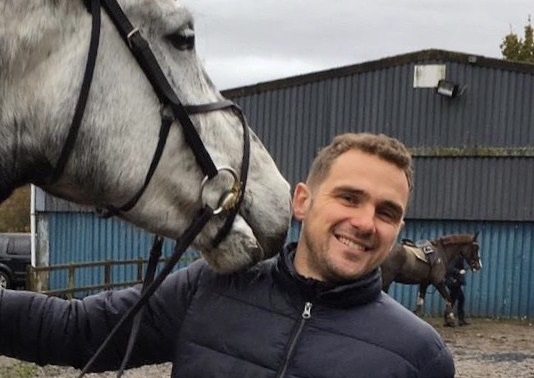Standing up for the veterinary profession
08 Aug 2024
As part of BVA’s work on #GoodWorkplaces, Brad Hill, Clinical assistant professor of Equine Clinical Practice at Nottingham Vet School shares his experiences and thoughts around improving inclusions in the equine sector.

For some of us within the equine profession hiding our protected characteristics is normal, and indeed we spend a large part of our time in practice ashamed of being our true selves. Is this additional baggage that we carry around something we choose to do, simply as a consequence of the environment we find ourselves in?
I’ve spent most of my career up until now in equine practice. I have sadly experienced prejudice as a gay vet, so am keen to implement change that sees the equine veterinary community become more inclusive. I have encompassed both first opinion and referral level work, which has provided me with a pragmatic appreciation of life in veterinary practice.
As part of my current role as an academic at the University of Nottingham, I am endeavouring to tackle the tricky subject of protected characteristics being a potential barrier to entering the equine profession.
Being able to identify with the idea of being different and therefore having to adapt and conform to your environment resonates with my time in equine practice.
I can think of examples where my own personal identity choices have been questioned by colleagues eg comments about my choice of clothing or gesticulations I have made. Not wishing to cry wolf, I have submerged these insecurities and seen them as a sign of being oversensitive perhaps owing to my sexuality. I didn’t want to be a troublemaker – life in practice is notably easier when you just fit in.
Friendly clients would often ask about my partner – “does she ride horses?” It’s difficult to respond to this type of question, so commonly I would find myself answering “Oh yes” and then closing the conversation quickly. I do not wish to paint a picture of overarching unhappiness as mostly my loyal and treasured clients were extremely understanding and accepting of me for who I am, as indeed were my colleagues. Nevertheless, these moments are not forgotten.
Since starting at Nottingham, I have become a mental health instructor as part of Mental Health First Aid England, and now recognise symptoms of generalised anxiety disorder within myself. I also sit on the Equality, Diversity and Inclusion (EDI) committee and have developed resilience teaching for the final year vet students. This work and stepping outside the practice bubble, has meant I now have a greater understanding of myself. This has led me to reflect on my life in practice, answering questions which I could never answer about my response and reactions to certain scenarios. I understand now that my resilience bucket needs to contain those things which allow me to function at my best, eg running every other day.
I’ve now learnt about “intersectionality”, a theoretical framework which describes how individual characteristics intersect with each other to create different levels of discrimination or privilege. It is a fashionable concept within the context of protected characteristics and has certainly provoked a strong emotional reaction within me. It has allowed me to think about the layers of my personality which contributed to my experience in practice. My sensitivity and empathy were advantageous, particularly during those high-stakes moments, whereas my consciousness and perfectionism may not have helped. Understanding this has helped me to be more resilient, and given me the confidence to speak up when someone makes an inappropriate comment.
Building resilience helps, but tackling discrimination and improving inclusion is the only way to make sure that no member of the profession struggles because they are different.
A recent Facebook opinion poll on the British Veterinary Ethnicity and Diversity Society (BVEDS) page demonstrated that 68% of voters said they thought there are there barriers to entering the equine profession based on protected characteristics. So, we need to do more to change this culture.
I’ve been working with BEVA to recognise the results of this poll and promote it on their social media, and to open conversations with vets to remove the embedded stigma. Whilst we have an EDI committee at the vet school, I would ask the equine profession to promote their own EDI committee whether that be as part of BEVA on a national level or within every single equine practice – it only takes one person to recognise change.
Let’s open up the dialogue surrounding race, mental health, sexuality and other protected characteristics, and debunk the idea that a large part of the equine profession is made up of white, middle class, heteronormative men.
For support about the issues raised in this blog, please check out the British Veterinary Ethnicity and Diversity Society and British Veterinary LGBT+ group. I also recommend reading “The Chimp Paradox” Dr Steve Peters, listening to the podcast “How to fail with Elizabeth Day”, and taking a look at the Mind website for advice and resources on looking after your mental health.
If you need to speak to someone in confidence, Vetlife Helpline is available 24 hours a day, everyday of the year, on 0303 040 2551 or you can send an anonymous email via the website.
The BVA good veterinary workplaces policy position also contains information on equality, diversity, and fair treatment, as well as mental health and wellbeing.
Get tailored news in your inbox and online, plus access to our journals, resources and support services, join the BVA.
Join Us Today